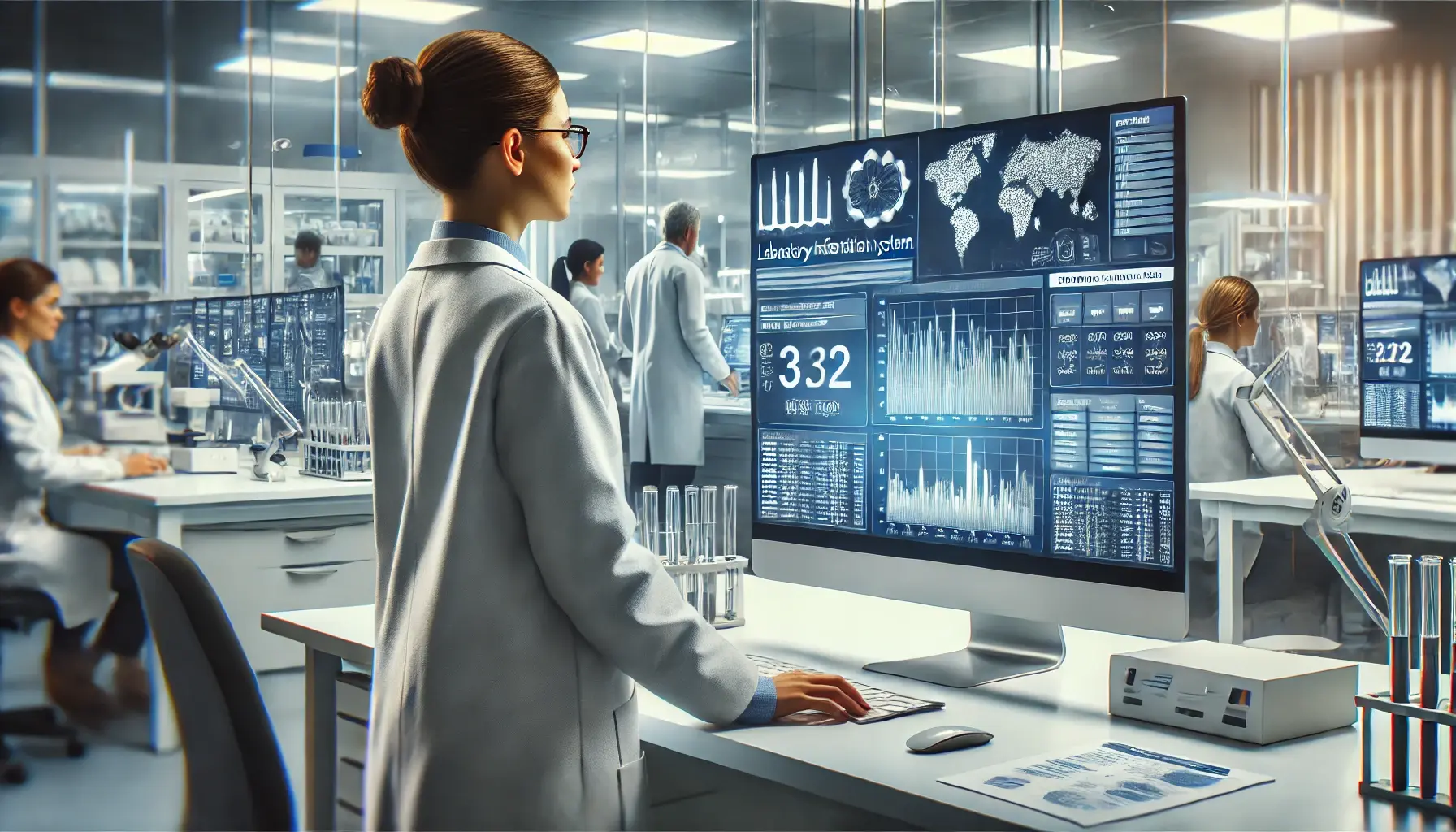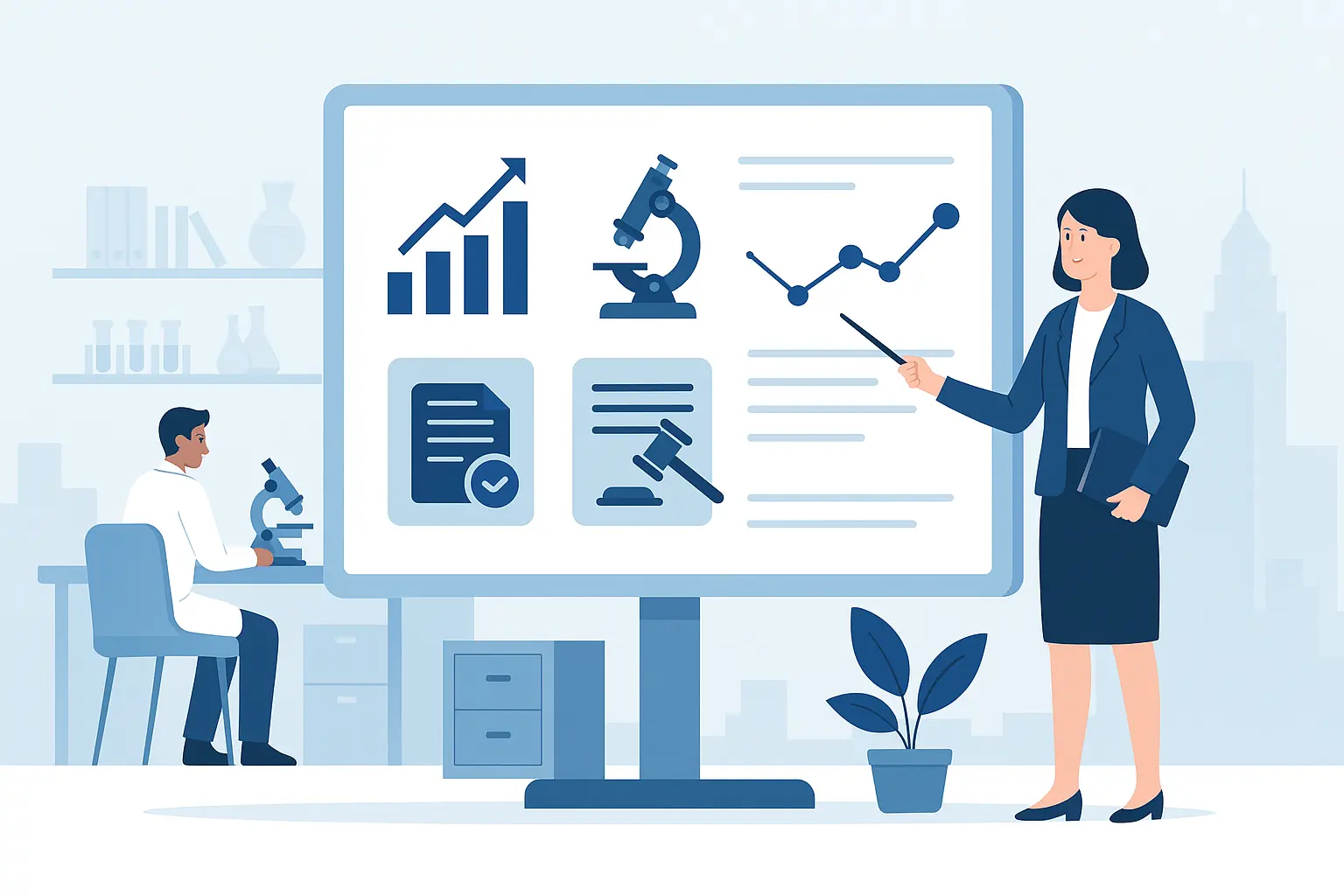Industry Insights
The Future of Laboratory Diagnostics: Emerging Technologies and Patient-Centric Care
June 27, 2025
Laboratory diagnostics have always been the silent backbone of modern medicine. Behind every clinical decision, there's a test, a result, and a team of professionals ensuring accuracy and timeliness. But this vital sector of healthcare is now undergoing a profound transformation. Driven by rapid technological advancements and a renewed focus on patient-centered care, medical laboratories are redefining their role, becoming not only providers of test results but strategic partners in the patient journey.
A New Era in Laboratory Diagnostics
The convergence of biology, engineering, and data science is fueling a wave of innovation in lab diagnostics. These breakthroughs are pushing the limits of speed, sensitivity, and specificity in disease detection and monitoring. At the same time, they’re enhancing lab efficiency and expanding access to diagnostic lab software tools.
1. CRISPR-Based Diagnostics
Initially developed as a gene-editing tool, CRISPR has evolved beyond the realm of genetic modification. Platforms like SHERLOCK and DETECTR harness CRISPR’s precision to detect specific genetic material from viruses or abnormal cells. Unlike traditional PCR methods, CRISPR-based diagnostics offer faster results, portability, and lower costs—ideal for point-of-care and outbreak settings. Labs adopting these platforms are better equipped to respond to public health emergencies while maintaining high sensitivity in routine diagnostics.
Examples of CRISPR-Based Diagnostics Applications
Infectious Disease Detection: CRISPR-based tests can identify viral and bacterial pathogens (such as SARS-CoV-2, Zika, dengue, tuberculosis) with high specificity and sensitivity, often within an hour and without the need for complex lab equipment.
Antimicrobial Resistance (AMR) Profiling: CRISPR diagnostics can detect specific genes that confer resistance to antibiotics, helping guide targeted treatment decisions and slow the spread of resistant infections.
Cancer Biomarker Detection: CRISPR systems can be engineered to detect tumor-specific mutations (such as in KRAS or EGFR genes), circulating tumor DNA (ctDNA), or RNA markers in blood samples, supporting non-invasive, early cancer screening.

2. Liquid Biopsies
Invasive biopsies have long been the standard for diagnosing cancer, but they come with risks and limitations. Liquid biopsy technology offers a non-invasive alternative by analyzing circulating tumor DNA (ctDNA) from a simple blood sample. Labs can use this method to detect cancer earlier, monitor disease progression, and identify potential relapses with remarkable precision. As adoption grows, liquid biopsies are becoming central to personalized oncology care, giving labs a pivotal role in cancer treatment strategy.
Examples of Liquid Biopsy Applications
Cancer Detection and Screening: Liquid biopsies can identify circulating tumor DNA, RNA, or tumor-derived exosomes in blood, enabling early detection of cancers such as lung, breast, colorectal, and prostate—often before symptoms appear.
Treatment Selection and Monitoring: By analyzing genetic mutations or alterations in circulating DNA, clinicians can match patients with targeted therapies (such as EGFR inhibitors in lung cancer) and monitor treatment in real-time.
Minimal Residual Disease (MRD) Detection: After treatment, liquid biopsies can detect small amounts of remaining cancer that may not be visible on imaging, allowing for early intervention before relapse.
3. Microfluidics and Lab-on-a-Chip
Microfluidics minimizes and automates clinical lab workflow on compact devices, often referred to as Lab-on-a-Chip (LOC) devices. These systems process small fluid volumes for rapid diagnostics, ideal for remote or resource-limited environments. Their applications range from infectious disease testing to environmental monitoring, and their portability makes them powerful tools for expanding access to lab services. As labs integrate these devices, they’re seeing gains in speed, efficiency, and versatility.
Examples of Lab-on-a-Chip Applications:
Point-of-Care Diagnostics: LOC devices enable rapid disease detection—such as HIV, malaria, or SARS-CoV-2—using just a small blood sample.
Drug Discovery: LOC platforms support a highly controlled environment for testing the efficacy of new drug compounds on cells or tissues, streamlining early-stage pharmaceutical research.
Environmental Monitoring: LOC technology can be deployed to analyze water and air samples, detecting pollutants and toxins with high sensitivity and on-site convenience.
4. Artificial Intelligence (AI) in Diagnostics
Artificial intelligence (AI) is rapidly transforming pathology and clinical laboratory operations. Advanced algorithms trained on large datasets can now support digital pathology tasks such as slide analysis, highlighting abnormalities, and uncovering patterns in lab results that might otherwise go unnoticed. By enhancing diagnostic precision and streamlining workflows, AI enables laboratories to increase throughput without adding staff. As adoption expands, AI, supported by advanced LIS laboratory information system software, is being integrated across key operational areas—from intelligent test routing to predictive analytics—driving greater efficiency and performance throughout the lab.
Examples of AI in Diagnostics Applications
Digital Pathology Solutions and Histopathology: AI can be used to scan and interpret whole-slide images, identify cancerous cells, grade tumors, and detect subtle histologic features, supporting faster and more consistent diagnoses.
Early Disease Detection: AI systems can process patient data to identify early indicators of diseases such as Alzheimer’s, diabetes, cardiovascular disease, or sepsis, before symptoms become clinically apparent.
Clinical Laboratory Automation: AI, when integrated with advanced medical LIS software, can be applied to optimize laboratory workflow management—automating test prioritization, flagging anomalous results, and identifying inefficiencies in sample routing and test utilization.
Case Study: OnePath - Transforming Pathology Lab Management Through Digital Innovation
5. Next-Generation Sequencing (NGS)
NGS has revolutionized genomics by enabling fast, comprehensive DNA and RNA sequencing. Whether identifying rare genetic mutations, classifying tumors, or tracking pathogens, NGS provides labs with unprecedented depth of insight. As costs drop and speed improves, even small labs are beginning to incorporate NGS into their offerings, expanding access to precision diagnostics.
Examples of NGS Applications
Cancer Genomics and Precision Oncology: NGS enables comprehensive profiling of tumors to identify mutations, gene fusions, and other alterations that can guide personalized treatment decisions and monitor resistance to therapy.
Inherited Genetic Disorder Diagnosis: Whole-exome sequencing (WES) and whole-genome sequencing (WGS) can help identify disease-causing variants in patients with rare or undiagnosed genetic conditions, often when traditional testing fails.
Infectious Disease Detection and Surveillance: NGS can sequence viral, bacterial, or fungal genomes to identify pathogens (such as SARS-CoV-2), track mutations, and monitor outbreaks with high resolution and accuracy.
6. Wearable Diagnostic Devices
Wearables are no longer limited to fitness tracking. New generations of devices can now monitor glucose levels, heart rhythms, and even biomarkers in sweat. This continuous data stream allows labs to shift from one-time testing to longitudinal health monitoring. Combined with remote diagnostics, wearables represent a new frontier in proactive, preventative care.
Examples of Wearable Diagnostic Device Applications
Cardiovascular Monitoring: Wearables like ECG patches and smartwatches with built-in heart rate sensors can detect arrhythmias (such as atrial fibrillation), monitor heart rate variability, and alert users to potential cardiac events in real-time.
Glucose Monitoring for Diabetes: Continuous glucose monitors (CGMs) provide real-time blood sugar readings through a wearable sensor, helping patients manage diabetes more effectively and reduce the risk of hypoglycemia or hyperglycemia.
Respiratory Monitoring: Wearable devices can continuously monitor respiratory rate and blood oxygen levels (SpO₂), providing valuable insights for individuals with chronic conditions like asthma, COPD, or COVID-19. These tools can also help detect early signs of respiratory distress, enabling faster intervention and improved disease management.
Patient-Centric Laboratory Medicine: A Strategic Shift
While technology is reshaping what labs can do, patient-centric care is reshaping what labs should do. Modern patients expect transparency, engagement, and a healthcare experience tailored to their individual needs. In response, laboratories are shifting from being behind-the-scenes operators to direct-to-consumer labs and active participants in patient care.
1. Direct Patient Engagement
Traditionally, lab results were delivered to physicians, not patients. That model is changing fast. Today, forward-thinking labs offer secure online portals (such as TestDirectly) where patients can access results directly, track trends over time, and better understand their health data. This transparency empowers and encourages patients to participate actively in their care decisions.
Advanced direct-to-consumer lab testing platforms even incorporate user-friendly explanations of test results, helping bridge the gap between complex data and patient understanding. This engagement builds trust, reduces confusion, and improves overall satisfaction with the healthcare experience.
2. Faster Turnaround Times
For patients awaiting critical results, time is of the essence. Labs that prioritize speed by automating clinical lab workflow and adopting rapid testing technologies not only enhance efficiency but also improve the patient experience. Streamlined logistics, integrated laboratory information system platforms, and AI-assisted processing all contribute to shorter wait times and faster diagnoses—benefits that patients can feel immediately.
Learn More: Unleashing Laboratory Excellence - Here’s How LigoLab’s Automation Engine Supercharges Lab Performance
3. Educational Support
Navigating lab reports can be daunting for the average patient. Leading labs are now investing in educational resources—clear result annotations, infographics, FAQs, and even video explainers—to help patients understand their diagnostics. This reduces unnecessary follow-ups, increases compliance, and reinforces the lab’s role as a trusted healthcare partner.
4. Precision Medicine Support
Personalized care is the future of medicine, and labs are at its core. With the rise of molecular diagnostics and genomics, labs provide clinicians with specific data that guides individualized treatment plans. This not only improves outcomes but also reduces unnecessary interventions, aligning diagnostics more closely with patient needs and preferences.
Labs that support precision medicine—through NGS, liquid biopsies, or pharmacogenomic testing—are helping healthcare evolve into a more customized, patient-focused system.
Learn More: Molecular Labs Hold the Key to Evidence-Based Precision Medicine
5. Feedback Loops for Continuous Improvement
Progressive laboratories are incorporating patient feedback mechanisms to refine their services. Surveys on sample collection experiences, satisfaction with result delivery, and clarity of communication offer valuable insights. By closing the loop and acting on feedback, labs can continuously improve service quality and patient satisfaction.
6. Holistic Health Data Integration
Rather than viewing each test in isolation, modern labs are integrating data to offer a 360-degree view of patient health. By compiling lab results, wearable data, and historical diagnostics into unified dashboards, labs can help providers make more informed decisions. This holistic view enhances diagnostic accuracy, supports preventive care, and aligns with the goals of value-based medicine.
7. Ethical and Privacy Considerations
As labs collect more detailed genetic and personal data, protecting patient privacy is critical. Leading labs are taking proactive steps to ensure data security, informed consent, and access to genetic counseling where appropriate. These measures are essential not only for compliance but also for maintaining patient trust in an increasingly digital and data-driven environment.
Industry Insights: Regulators Are Rewriting HIPAA - 2025 Survival Guide for Clinical & Pathology Labs

The Lab of the Future: Technology-Driven and Patient-Focused
The convergence of emerging technologies and patient-centric strategies is redefining the role of the medical laboratory. No longer siloed from the rest of the healthcare system, modern labs are becoming active partners in delivering timely, accurate, and personalized care.
This transformation is driven by:
- Automation that enhances speed and accuracy.
- AI and data analytics that turn information into insights.
- Direct patient engagement that fosters trust and empowerment.
- Advanced testing methods that support early detection and precision medicine.
For laboratories, the path forward lies in embracing both innovation and empathy—leveraging the power of cutting-edge technology while keeping patient needs, concerns, and outcomes at the forefront.
To learn more about how labs are modernizing with patient-first strategies and emerging technologies, or to schedule a demo of LigoLab’s next-gen Medical LIS and Lab RCM solutions, contact a LigoLab Product Specialist.






